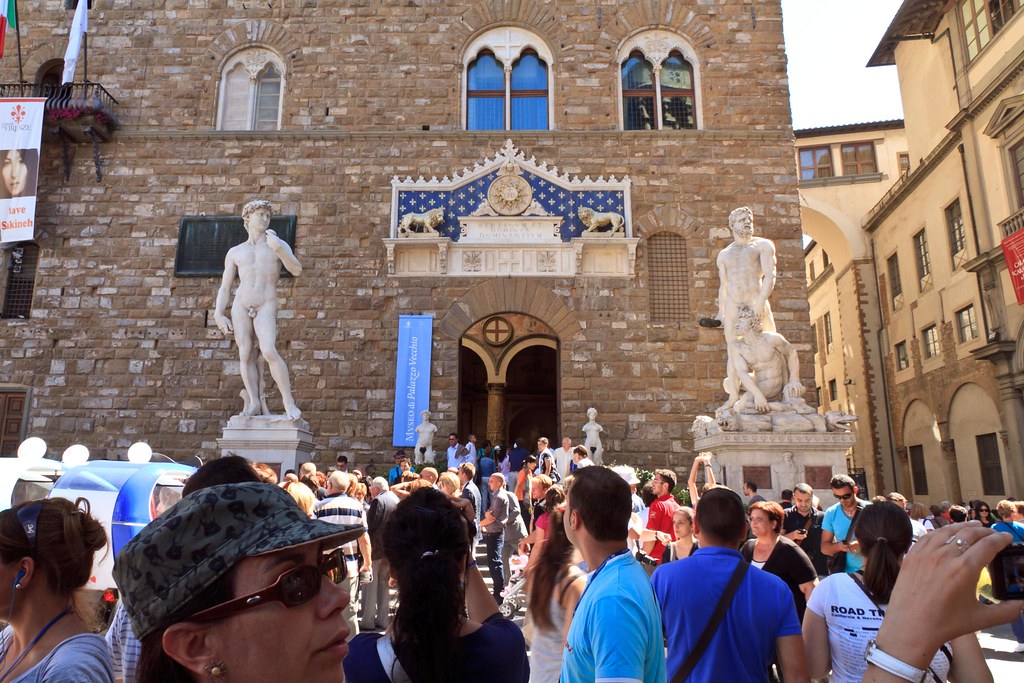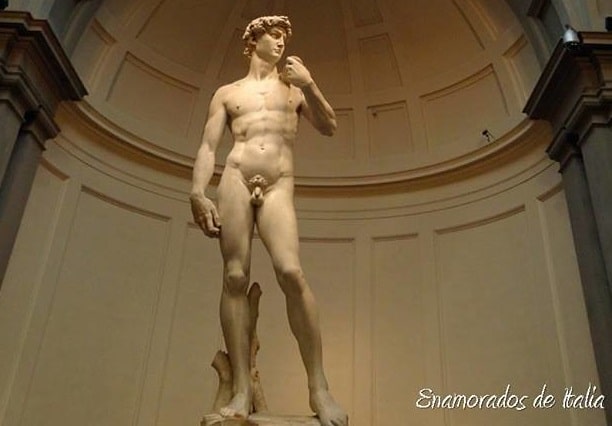
“100902.Crucero.IMG_1813” by Ricardo SB is licensed under CC BY-NC-SA 2.0
Throughout the history of art there have been great sculptors who have made magic with their hands. Imposing statues, hyper-realistic, associated with a great history or mythical for their implications.
In this post let's see some curiosities about Michelangelo's David, transporting us to the time when it was created. Let's travel back in time!
Michelangelo's David is probably the most famous sculpture in the history of art. This sculpture carved in marble, 5,17 meters high and 5572 kilograms in weight, It was made by Miguel Ángel Buonarroti between 1501 and 1504. The statue was commissioned by the Duomo Opera of the Santa Maria del Fiore cathedral, Florence. The Duomo Opera was in charge of the conservation and maintenance of the sacred places. Also by the labor office of the Cathedral of Florence and by the wool merchants guild. These groups they wanted to build twelve large sculptures of biblical characters for Santa María del Fiore. The David was the third to be sculpted.
Represents David's biblical victory in facing Goliath. But why was this commission produced in particular? As a symbol of the Republic of Florence, of the defeat of the religious Girolamo Savonarola before the supremacy of the Medici and the threat of the Papal States. In this case the small fish ate the big one.
And where did such a block of marble come from? Well, from the Fantiscritti quarry, in Carrara, being transported by sea to Florence by the Arno river.
How did Miguel Ángel face such a work? Well, based on sketches and small-scale models made of wax or terracotta. Contrary to what can be expected, Michelangelo did not make a life-size plaster model, as it used to be done at the time, but it was done directly on the marble, using the chisel.
One of the characteristics that makes it special is that it can be admired from any perspective, not just from the front, as was the case with medieval sculptures. The David can be admired from all its profiles, something that Michelangelo studied in detail when carving it.

«David de Miguel Angel, Galleria dell'Accaedemia» by gemma.grau is licensed under CC BY-NC-SA 2.0
It is believed that, in this representation of David, Goliath has not yet been defeated, since, by his position, appears prepared for combat, in tension, with the body slightly turned (a famous posture at the time, called contrapposto. This time it is believed to be due to a hole in the original mold, to which Michelangelo had to adapt), the frown and the slightly open nostrils, in an enraged state, about to attack. Other studies believe that the statue represents just the moment when David has killed Goliath and looks at him with anger but calm.
Another remarkable curiosity is that the David does not meet the classic proportions that met the sculptures of the time. It is believed that it is due to the position that the statue was to occupy, in one of the buttresses of Santa María del Fiore, in such a way that in the distance these proportions were fulfilled.
It also highlights that should be circumcisedSince David was a Jew, which is not the case in sculpture. Several explanations have been given to this fact, none conclusive.
Finally, this great work of art It was placed in the Plaza de la Signoria, where today there is a copy of 3 meters high, when it was replaced in 1873. The change occurred due to the constant attacks by defenders of the Medici (he was stoned, an arm was amputated, etc). It is currently protected in the Gallery of the Academy from Florence, where long queues of tourists come eager to see this great work of art.
And you, what are you waiting for to find out more about the fascinating life of Renaissance sculptors?